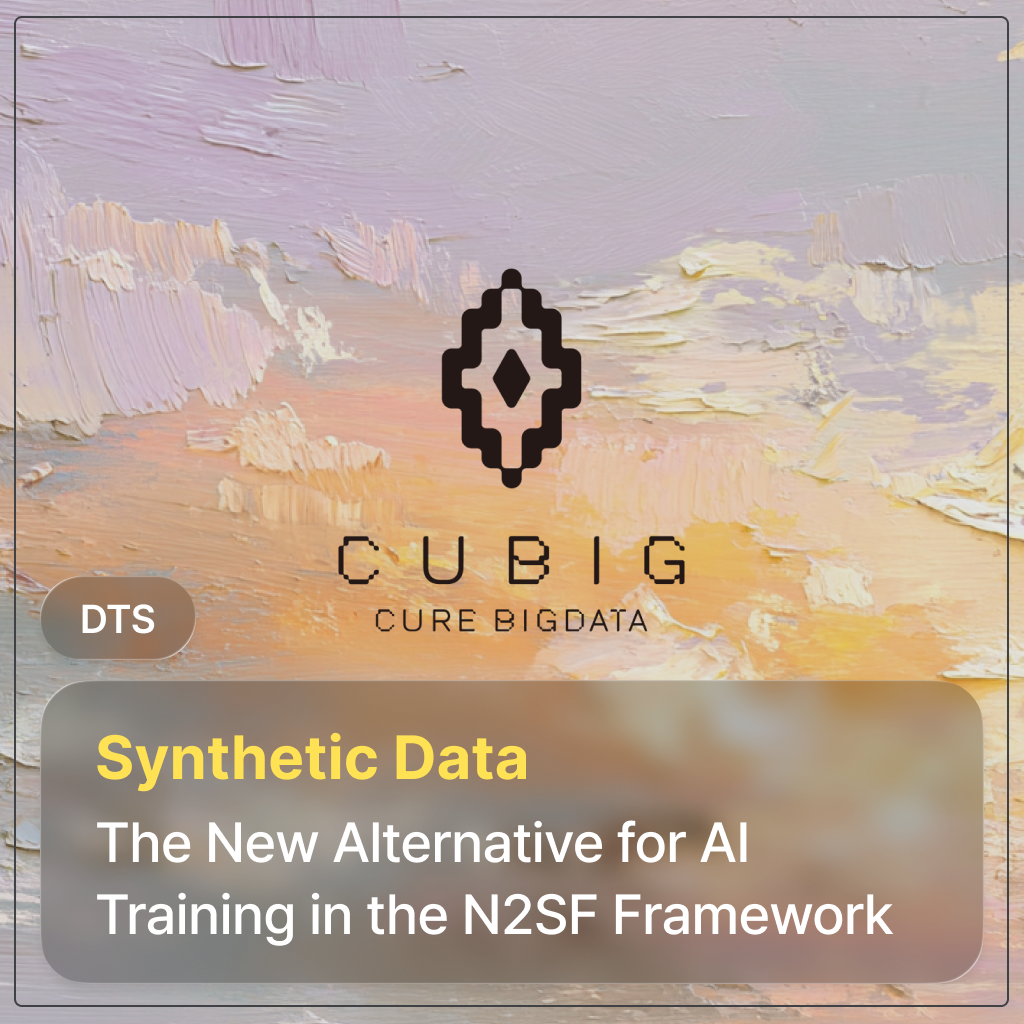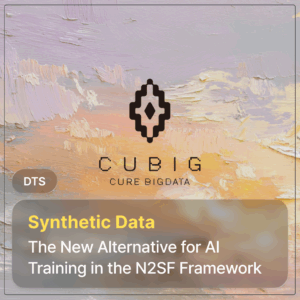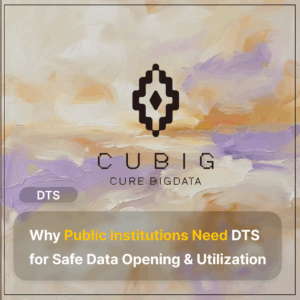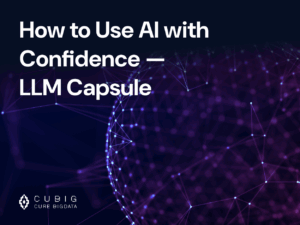Synthetic data AI training: a new path for public institutions in the N2SF era
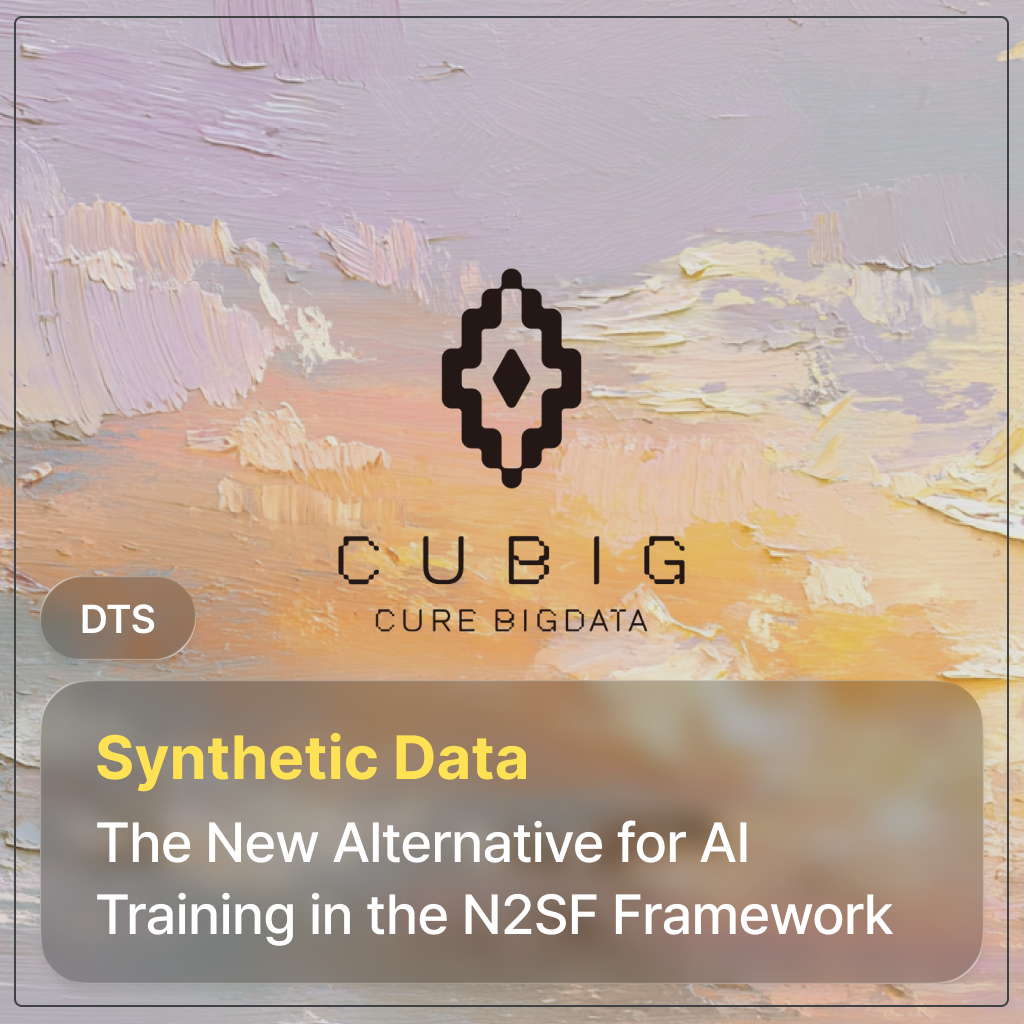
Table of Contents
Hello, this is CUBIG, helping public institutions use AI safely with synthetic data and AI privacy technology. 🙂
Across government, the term “synthetic data AI training” is appearing more and more.
With the National Network Security Framework, N2SF, being rolled out, many teams are asking the same question:
“Is there a way to train AI models without exposing sensitive data outside our control?”
In this post, let’s look at why synthetic data AI training matters in an N2SF environment, and how DTS can support that shift.
🤖 Why synthetic data AI training is gaining attention in the N2SF era

N2SF moves beyond traditional “hard” network separation.
Instead of simply splitting networks, it classifies information and systems into different sensitivity levels (for example: classified, sensitive, open) and applies different security controls to each.
In practice, it means this:
- Not all data is treated the same; protection depends on its importance.
- At the same time, public institutions are expected to use new technologies like AI and cloud in a controlled way.
The challenge is that most AI training data falls into the “classified” or “sensitive” category.
Resident information, health and welfare history, complaints, counseling logs, location traces – all of these are difficult to move, copy or use freely, and N2SF will typically make such movements even more tightly governed.
But stopping AI adoption isn’t an option.
That is why “training AI with synthetic data” is becoming a realistic alternative for many public-sector teams.
🧩 What do we actually mean by “synthetic data AI training”?

You don’t need to think of synthetic data AI training as something mysterious or overly technical.
If we simplify the process, it looks roughly like this:
- Use the original data to learn the patterns and relationships at a group level.
- Generate a new dataset that keeps those patterns, but no longer refers to real individuals.
- Train AI models on this synthetic dataset instead of directly on the raw personal data.
In other words, the model is not memorizing “each real person’s record”,
but learning “how this population behaves as a whole”.
From a public-sector point of view, synthetic data AI training offers three important benefits:
- You can avoid pushing raw data into external or less-trusted environments.
- You can keep statistical patterns and structure while greatly reducing privacy risk.
- Sensitive, high-risk data stays inside, while synthetic data can be used more flexibly for experiments, pilots and research.
🔐 What synthetic data AI training means in an N2SF context

N2SF is not a framework designed to “block AI”.
It is a way to redesign security so that AI and data protection can coexist under clear rules.
Within that framework, synthetic data AI training has three key roles:
- It separates sensitive data from the AI training environment Original data remains under strict control in high-security zones,
while synthetic data can be used to train models in less restricted zones or environments.
This helps move away from the old dilemma:
“If we protect the data, we can’t use AI; if we use AI, we might expose the data.” - It reduces the tension between data use and security In many projects, “We can’t, for security reasons” and “We must, for innovation” end up in direct conflict.
Synthetic data AI training does not magically solve everything,
but it creates a middle ground where security teams and data/AI teams can actually talk and align. - It makes audits, reporting and accountability clearer When the process of generating synthetic data, the scope of use,
and the AI training history are logged and reported,
it becomes much easier to explain “what data was used, in what form, and for which models”
during N2SF-based security reviews or audits.
So synthetic data AI training is not a replacement for N2SF requirements,
but it is one of the most practical strategies for introducing AI while respecting N2SF principles.
🏛 Practical examples of synthetic data AI training in public institutions

To make this more concrete, here are some public-sector use cases where synthetic data AI training can play a role.
- Automatic classification and prioritization of complaint texts
Complaint texts often contain names, contacts, addresses and very detailed personal situations.
By generating synthetic complaint texts that preserve topics and structure,
institutions can train models to predict “topic, urgency, responsible department, expected difficulty”
without sending real citizens’ information into external systems. - Welfare and health policy: finding target groups and blind spots
Income, health status, family structure and support history are among the most sensitive classes of data.
With synthetic data that reflects these patterns,
agencies can train models that estimate “where support is likely to be missing”
or “which profiles are at higher risk of being overlooked”,
helping improve policy design while still protecting real individuals. - City, traffic and environmental forecasting models
When transport cards, sensors and CCTV feeds are tied to individuals,
they quickly become high-sensitivity data.
Synthetic time-series and image data can be used to train models that predict congestion,
accident risk or environmental indicators,
while keeping actual movement traces and identities safely within the tightly controlled environment.
In all these examples, the common pattern is clear:
you create a training environment that closely resembles reality,
without exporting real-world personal records into that environment.
✅ Key requirements for N2SF-aligned synthetic data AI training

If you are designing a synthetic data AI training environment with N2SF in mind,
a few conditions are particularly important from a public-institution perspective:
- Clear and strict control over access to original data
- Privacy safeguards built into the synthesis process (not just after-the-fact masking)
- Quantitative validation of both the quality and safety of the synthetic data
- Support for multiple data types (tables, text, images, time-series) within one coherent framework
- The ability to operate in on-premise, network-separated or closed environments
When these conditions are met, synthetic data AI training stops being a “nice idea”
and becomes a concrete, operational part of your N2SF-aligned data and AI strategy.
⚙ Building an N2SF-ready synthetic data AI training stack with DTS

The remaining question is “how” to implement all of this in practice.
It is one thing to agree that synthetic data is useful;
it is another to turn that into a robust, auditable infrastructure.
CUBIG’s DTS (Data Transformation System) was designed with exactly this challenge in mind.
It is a synthetic data engine built for high-security environments such as public, financial and defense sectors.
Seen from a synthetic data AI training perspective, DTS has several important characteristics:
- Non-access architecture for original data
DTS is built so that external vendors do not directly access the raw data.
The synthesis pipeline runs inside the institution’s own environment,
ensuring that original data always stays within the organization’s security boundary. - Differential privacy as a built-in protection layer
DTS applies differential privacy techniques during the synthesis process, mathematically limiting the likelihood that any specific individual could be re-identified from the synthetic data.
This allows institutions to demonstrate that the risk level around personal data has been reduced and controlled. - One pipeline for tables, text, images and time-series
Administrative tables, complaint texts, CCTV or field images, sensor time-series –public data is rarely just one type.
DTS is designed to handle these multiple formats within a single framework,
so institutions do not need to purchase and manage separate tools for each data type. - Automatic reports for quality and safety
When DTS generates synthetic data, it also provides a validation report,
including statistical similarity indicators, AI performance comparisons and re-identification risk metrics.
These reports become valuable evidence in internal reviews, N2SF documentation and audits,
showing that synthetic data AI training was conducted under controlled, transparent conditions. - Ready for on-premise and network-segmented environments
DTS supports on-premise deployment, allowing institutions to build a synthetic data AI training environment even when internet access is strictly limited or fully blocked.
This is particularly important for agencies that must maintain strong network separation under N2SF.
In short, DTS takes synthetic data AI training from “concept” to “infrastructure”.
🚀 Starting your N2SF-aligned synthetic data AI journey with DTS
N2SF is changing the way public institutions think about networks, data and AI.
Instead of saying “we cannot use AI because of separation”,
institutions are now asked to define “how we protect different data types while still enabling AI where appropriate”.
Synthetic data AI training is one of the most practical strategies in this transition.
It allows you to prepare and train models without directly exposing sensitive citizen data,
while laying the groundwork for safer collaboration with partners, researchers and other agencies.
DTS was built to make this strategy workable in real environments:
from non-access architecture and differential privacy,
to multi-type data support and automated validation reports.
If your organization is exploring N2SF-aligned AI projects,
it can be a good start to run a small pilot using synthetic data AI training with DTS,
then gradually expand the scope as your internal policies, teams and systems mature.
CUBIG can work with you to review your current data environment,
identify which use cases are best suited for synthetic data AI training,
and design a DTS deployment approach that fits your security and compliance posture.

#syntheticdata #AItraining #syntheticdataAI #N2SF #publicsector #publicdata #DTS #CUBIG #AIprivacy #datadrivenGovernment
CUBIG's Service Line
Recommended Posts


